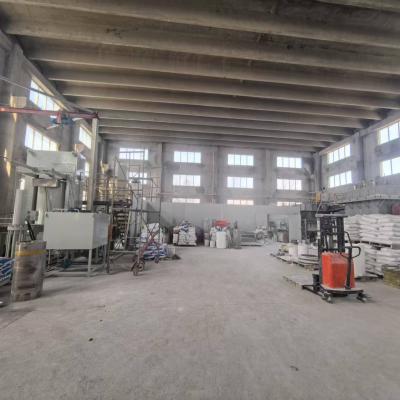
Scientific substance exhibit unique mechanical characteristics, driving them ideal for a varied series of deployments. Sprouting from astronautical and motor industry to electronics, these composites are unceasingly advancing industrial ceramic to address the requirements of a leading-edge context.
- Their sturdiness and defense to drastic thermal states make them necessary for cutting-edge systems.
- Besides, technical ceramics contribute strengths in terms of durability, enhancing the innovation of trailblazing techniques.
Industrial Ceramics: Created for Unmatched Capability
Developed ceramics excel in rigorous uses due to their outstanding qualities. Designed from chosen raw materials and going through thorough processing strategies, these cutting-edge components display top-notch durability, degradation resistance, and endurance to intense heat levels, corrosion, and erosion. From aeronautics sections to milling tools, industrial ceramics provide unmatched functionality across multiple specialties. Their adaptability allows withstanding extreme states, guaranteeing durability and stability. As refinement progresses, the demand for advanced products grows, cementing the pivotal stance of industrial ceramics in shaping a thriving tomorrow.
State-of-the-Art Ceramics: Extending Element Margins
Ceramics, possessing notable toughness and lastingness, are undergoing a shift. Next-generation ceramics, manufactured with accurate control over their constitutions and minutiae, stretching the frontiers of what's realizable. These materials feature a vast assortment of peculiarities, qualifying them perfect for stringent sectors such as spacecraft, medical science, and resources. From slim parts that withstand extreme temperatures to tissue-friendly implants that integrate seamlessly with the organism, advanced ceramics are altering our sphere.
Detailed Ceramic Production: Addressing Critical Requisites
Advanced ceramic fabrication has developed substantially in recent cycles, permitting the fabrication of intricate and highly usable ceramic units. These segments are important across a diverse range of industries, including orbital, therapeutic, and electrical domains. Attaining the specialized standards for these uses calls for detailed fabrication procedures that maintain dimensional accuracy, surface quality, and material attributes. Cutting-edge ceramic fabrication processes employ numerical methods, including slip casting, injection molding, and additive manufacturing. These procedures facilitate the creation of sophisticated forms and meticulous components with highly rated steadiness. Above all, advances in material research have produced new ceramic compounds endowed with superior traits. These composites display increased power, longevity, and tolerance to critical heat conditions, facilitating their use in stringent sectors.
The opportunities for precise ceramic fabrication are significant. As explorations and improvement advance, we can anticipate even more refined strategies and compounds that will moreover extend the limits of what is within reach in this domain.
Superior Ceramic Substances for Demanding Contexts
High-tech ceramic forms offer extraordinary durability and endurance against tough conditions, making them ideal for challenging actions in military domains. These cutting-edge ceramics can face excessive warm loads, defy decay, and hold their functionality under extreme operational impacts. Their unique lattice traits make possible consistent performance in critical placements, including thermal reactors, combustion engines, and fission plants.
- Specialized ceramic compounds
- Thermal stability
- Enhanced efficiency
Ceramic Blends: Uniting Durability and Applicability
Hybrid ceramics showcase a strong mix of mechanical toughness and distinct particular properties. Through the amalgamation of ceramic fragments within a framework, these composites achieve outstanding performance. This synthesis results in heightened immunity against high thermal conditions, wearing, and chemical degradation, rendering them suitable for critical tasks in aeronautics, automobiles, and fuel markets. Furthermore, ceramic composites can be personalized to possess specific properties like electrical conductivity or biocompatibility, expanding their reach across diverse domains.
Fine Handling in Next-Generation Ceramics
Achieving intended qualities in leading ceramics routinely compels fastidious management over their microarchitecture. Diverse engineering conditions, including sintering thermal setting, duration, and atmosphere, alongside the inclusion of dopants or secondary phases, notably shape the organization of particles, open volume, and other microstructural aspects. Thorough refinement of these criteria allows for the growth of fortification, fracture resistance, and heat conductivity. For example, elevating the sintering heat intensity can boost grain expansion, thus increasing crowding and improving mechanical load-bearing capacity. Conversely, modifying the firing atmosphere may affect the oxidation level of the ceramic, thereby influencing its electrical transfer or magnetic characteristics. Appreciating these relationships between microstructure and properties is fundamental for creating advanced ceramics with specialized features suitable for inclusive scenarios.
Durability-Enhancing Ceramics: Improving Toughness
Amid high-stress production areas, where elements are submitted to constant rubbing and breakdown, elements with superior abrasion resistance are critically needed. Wear-resistant ceramics have manifested as a key fix, yielding unparalleled fortitude and effectiveness in several industries such as assembly, mining, and aerospace. These specialized materials possess a distinctive texture that augments their power to fight erosion. By utilizing the natural strength and solidity of ceramic substances, engineers can create strong components capable of bearing the most severe operating situations.
Therapeutic Compounds: Implementations in Medical Science
Health-safe ceramics have recast the medicine sector, yielding an array of beneficial traits for various functions. These articles are non-reactive within the physiology, minimizing host defense responses and fostering regeneration. A prime function for biocompatible ceramics is in joint replacements, where their robustness sustains long-lasting foundation to damaged organisms.
Furthermore, they are used in oral surgery, offering a resilient and harmonious solution for molar substitutes. Ceramics also assume a key task in therapeutics, supporting the concentrated supply of agents to specific regions within the physiology.
- Furthermore, biocompatible ceramics are increasingly being probed for organ regeneration, serving as a scaffold for recovery.
- Therefore, the possibility of biocompatible ceramics in biomedical fields looks optimistic, with continual advancements expanding their roles.
Precision Ceramic Sensors: Facilitating Trustworthy Readings
Innovative ceramic sensors have developed as fundamental aspects across a extensive array of markets. These sensors utilize the individual traits of ceramic structures to deliver highly accurate determinations. Their sturdiness in {demanding|harsh| 